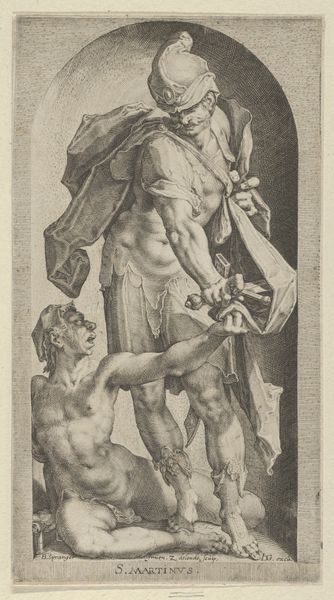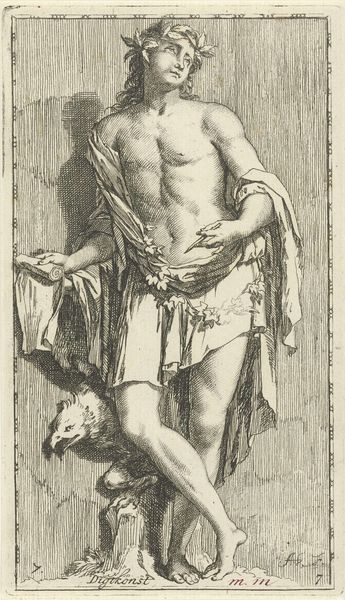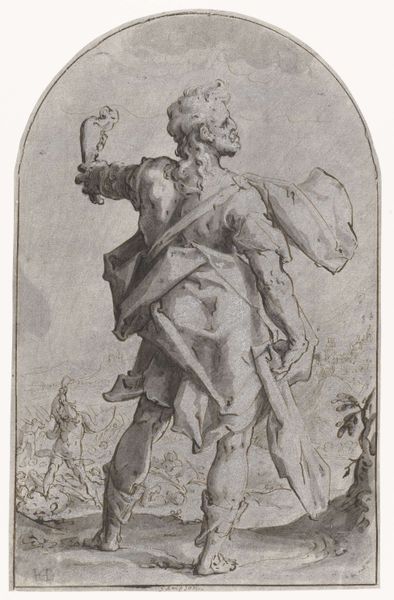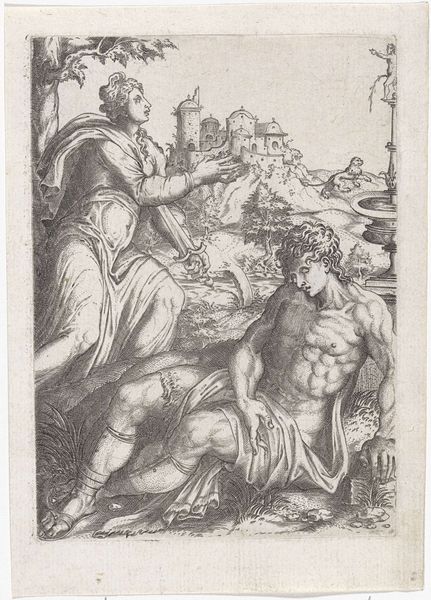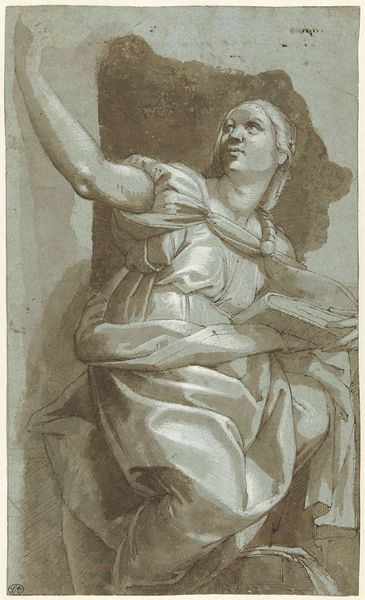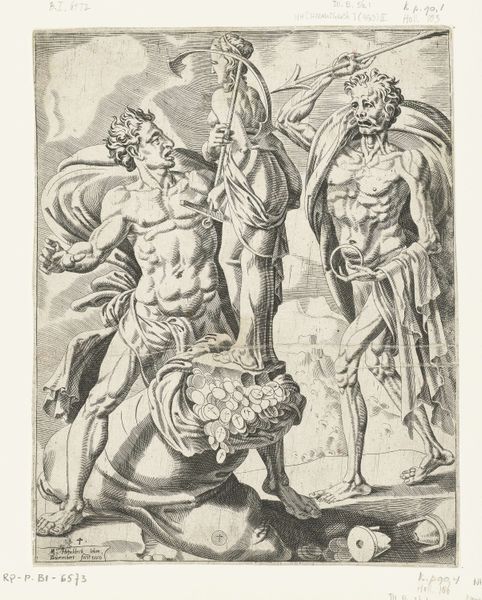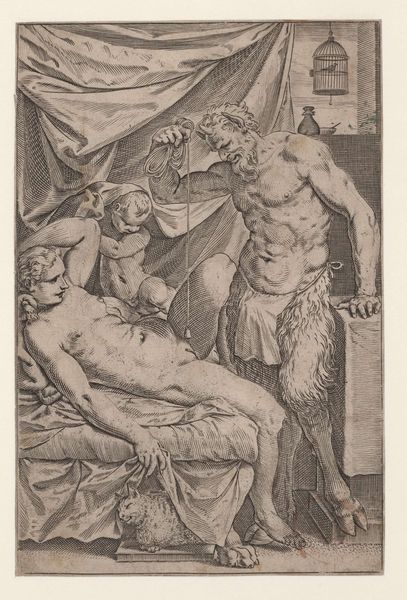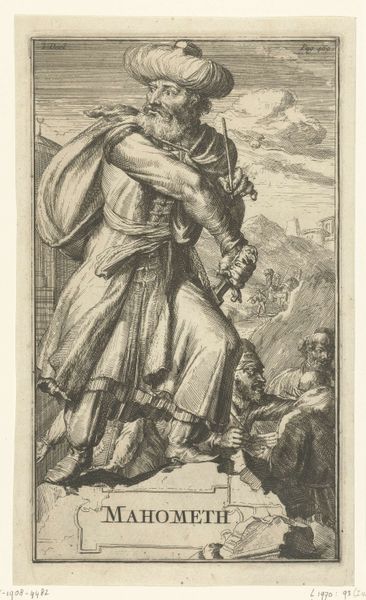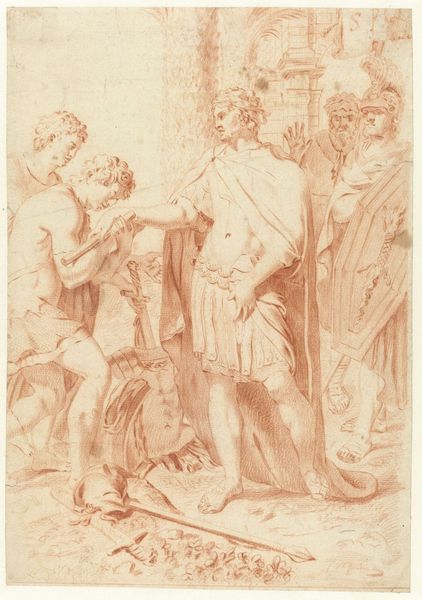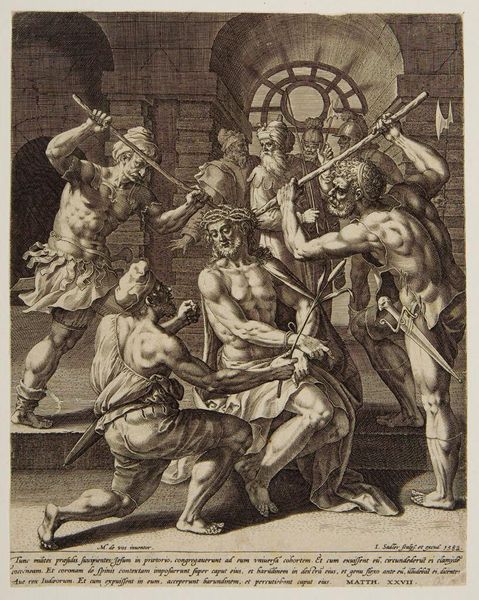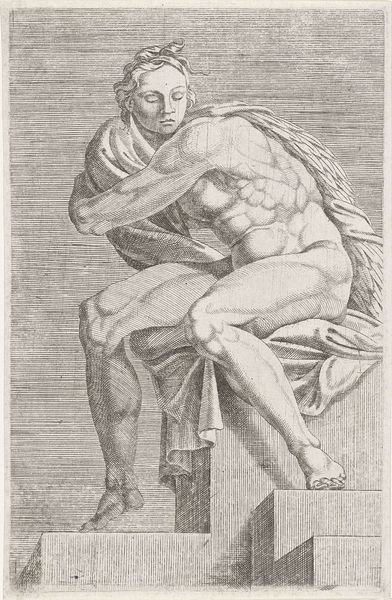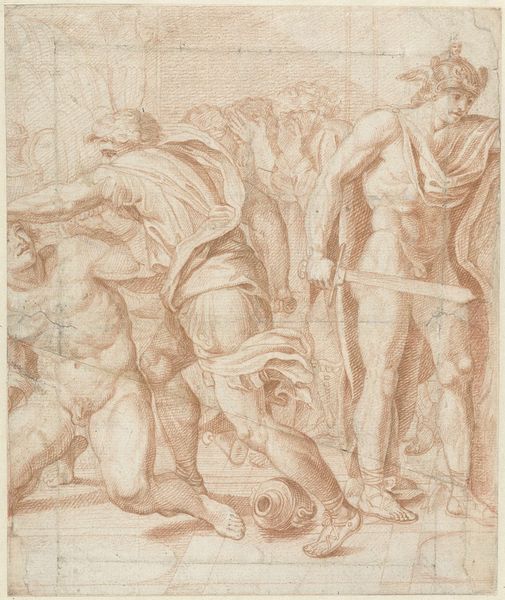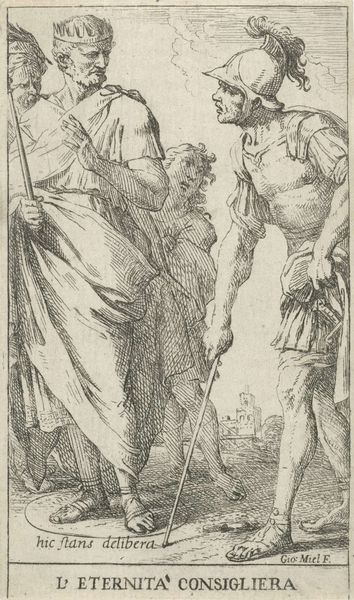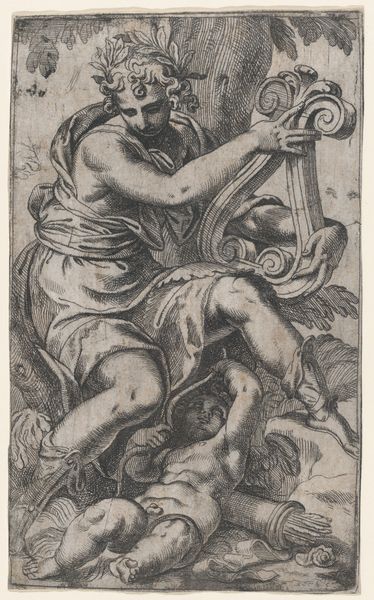
drawing, ink, charcoal
#
drawing
#
narrative-art
#
pencil sketch
#
charcoal drawing
#
mannerism
#
figuration
#
ink
#
pencil drawing
#
charcoal
#
history-painting
Dimensions: height 246 mm, width 120 mm
Copyright: Rijks Museum: Open Domain
Editor: This is a drawing titled "Saint Martin and the Beggar," made between 1599 and 1609 by Bartholomeus Spranger. It’s done with ink, charcoal, and pencil. The contrast really grabs me – the saint is so richly dressed compared to the…well, the beggar. What do you make of it? Curator: Well, first off, let's just say Spranger isn't known for his commitment to realism, is he? Look at those dramatically muscular figures! But, beyond the Mannerist flair, I see a potent rendering of Christian charity. What strikes me is how St. Martin’s action – that selfless act of cutting his cloak – is filled with such urgency and genuine feeling. Doesn’t it feel like a frozen moment of intense empathy? Editor: Absolutely! It’s almost theatrical, like a scene from a play. I’m wondering about the beggar's exaggerated pose, writhing like that. Is he suffering, or is it more symbolic? Curator: I'd argue both. The beggar's pose amplifies the saint's compassion. In a way, the beggar is an "excuse" for the Saint to show off and develop his skills. Consider the historical context: images of charity were powerful reminders, and Spranger was skilled at injecting drama and heightened emotion into these scenes. His intention probably was not for deep psychological introspection, but certainly an appeal to sentiment. The Baroque knew the path to the soul goes via the senses. What do you make of that almost architectural background, framing the action? Editor: It looks unfinished, a little like a stage set, doesn’t it? Perhaps that enhances the dramatic effect too, keeping the focus tightly on the figures and their interaction. It's also clear to me that drawing focuses almost all the attention in the bodies. Curator: It does. For me, it all speaks to art’s power to visually express the fundamental message that true value resides not in outward wealth, but in generosity of spirit. Spranger does get that right in my view, so despite being "theatrical" the figures convey and encourage moral virtue. Editor: I never thought of it that way. Now that you mention the artist's emphasis, the viewer does not need to engage in mental gymnastics, rather the moral message hits you directly and in the guts. Thanks, I'm gonna ponder about Saint Martin more this afternoon!
Comments
No comments
Be the first to comment and join the conversation on the ultimate creative platform.
